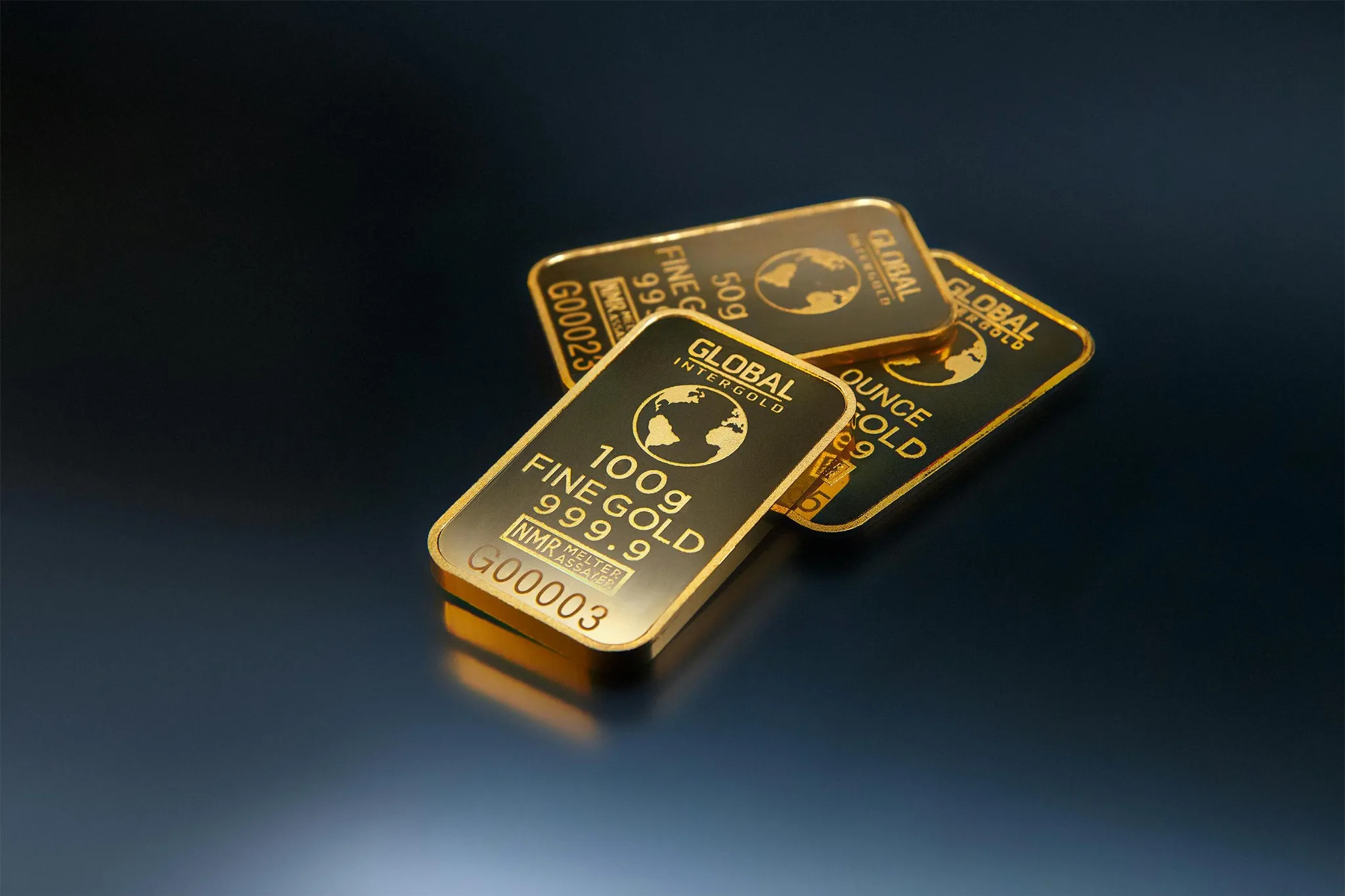Subscribe to get our FREE
GOLD IRA GUIDE
How a Gold IRA Works and Why You Should Consider One Today

In an ever-fluctuating economic landscape, securing your financial future requires innovative strategies. One strategy that is recently gaining traction is investing in Gold IRA part of the retirement portfolio.
This type of investment offers a unique blend of stability and growth potential. In fact, while traditional investments face volatility, a Gold IRA allows investors to diversify their portfolio by adding precious metals, which have been valued for centuries.
But the real question is how does it work, and why should you consider incorporating one into your retirement plan?
To answer this one and many more questions, we created this article, that will unlock the doors to wealth, breaking down the mechanics of a Gold IRA and highlighting its numerous advantages. Understanding the benefits of investing in precious metals can be incredibly beneficial, but at the conditions that you will have the necessary level of commitment and information quality by your side.

Key Takeaways:
- A Gold IRA allows you to invest in physical precious metals within a tax-advantaged retirement account.
- It offers diversification, acting as a hedge against inflation and economic downturns.
- Setting up a Gold IRA involves selecting a custodian, funding the account, and choosing IRS-approved metals.
- Understanding the benefits and potential risks is crucial before incorporating a Gold IRA into your retirement strategy.
What is a Gold IRA?
A Gold Individual Retirement Account (IRA) is a specialized type of self-directed IRA that allows investors to hold physical gold, along with other precious metals, as part of their retirement portfolio.
This investment vehicle offers a unique opportunity to diversify beyond traditional assets like stocks, bonds, and mutual funds.
In fact, traditional IRAs invest in paper-based assets, while a Gold IRA is backed by tangible assets, giving investors a sense of physical ownership over their investments (even if managed by a third party).
This can be particularly appealing during times of economic uncertainty, when the value of paper assets may fluctuate wildly. Examples: War in Ukraine, American elections, Trump's new politics and announcements, internal political instability, a potential conflict against China...In this scenario, the demand for Gold and other precious metals is raising.
This is the reason why the concept of a Gold IRA taps into the historical value of gold as a stable and enduring form of wealth. Gold has been used as a medium of exchange for thousands of years, and its value has remained relatively stable over time, even amidst economic turmoil.
This stability makes gold an attractive option for those looking to hedge against inflation, currency devaluation, and other economic risks.
Therefore, by incorporating gold into your retirement plan, you can potentially safeguard your savings from the volatility of the financial markets.
A Gold IRA operates similarly to a traditional IRA, with the main difference being the types of assets held within the account. To open a Gold IRA, you need to work with a custodian who specializes in this type of account.
The custodian will facilitate the purchase and storage of physical gold, ensuring that it meets the IRS's purity standards. This process involves several steps, including selecting a custodian, transferring funds, choosing the types of precious metals to invest in, and ensuring proper storage.
The Benefits of Investing in a Gold IRA

So now let's explore together which are the main benefits of investing in precious metals like Gold in your IRA, and which are the concrete advantages for you.
Diversification
One of the most compelling benefits of investing in a Gold IRA is diversification. Diversification is a fundamental principle of investing, aimed at reducing risk by spreading investments across various asset classes.
By adding gold to your portfolio, you introduce an asset that often moves independently of traditional financial markets. This means that when stocks and bonds are underperforming, gold may hold its value or even appreciate, providing a stabilizing effect on your overall portfolio.
Inflation Hedge
Another significant advantage of a Gold IRA is its potential as a hedge against inflation. Inflation erodes the purchasing power of money, leading to higher prices for goods and services. While paper currencies can lose value over time, gold has historically maintained its purchasing power.
During periods of high inflation, the price of gold often rises, helping to protect the real value of your savings. This characteristic makes gold an attractive option for long-term investors who are concerned about preserving their wealth in the face of rising living costs.
Security
Gold IRAs also offer a degree of security that is hard to match with other investments. Physical gold is a tangible asset that cannot be easily created or destroyed, making it a safe haven during times of economic uncertainty.
Unlike stocks, which can become worthless if a company goes bankrupt, gold has intrinsic value due to its rarity and demand in various industries.
This intrinsic value provides a level of security that can be reassuring for investors, especially those nearing retirement who are looking to protect their nest egg from market fluctuations.
How Gold IRAs Compare to Traditional IRAs
When comparing Gold IRAs to traditional IRAs, several key differences emerge, each with its own set of advantages and considerations.
Traditional IRAs primarily consist of paper-based assets such as stocks, bonds, and mutual funds.
These types of investments are subject to market volatility and economic factors that can significantly impact their value. In contrast, Gold IRAs are backed by physical gold and other precious metals, providing a tangible asset that offers a different risk profile.
One of the main differences between the two is the way they handle diversification. While traditional IRAs can achieve diversification through a mix of various paper assets, a Gold IRA adds another layer of diversification by introducing a physical commodity into the mix.
This can be particularly beneficial during periods of economic instability, where traditional assets may be more susceptible to market downturns.
As a consequence, by diversifying your retirement savings with gold, you can potentially reduce the overall risk and increase the resilience of your portfolio.
Another notable difference is the management and storage of the assets.
Traditional IRAs are typically managed by financial institutions that handle the buying and selling of investments on behalf of the account holder. With a Gold IRA, the process is more hands-on, requiring the investor to work with a custodian who specializes in precious metals.
This custodian is responsible for purchasing the gold, ensuring its purity, and arranging for secure storage in an approved depository. While this process may seem more involved, it offers the advantage of having a physical asset that you can actually hold, providing a sense of security that paper assets cannot.
The potential for growth is another area where Gold IRAs and traditional IRAs differ. While the value of traditional IRA assets is largely driven by market performance, the value of a Gold IRA is influenced by factors such as supply and demand, geopolitical events, and economic conditions.
This means that gold can perform well even when traditional markets are in decline, offering a counterbalance to other investments in your portfolio.
However, it's important to note that gold prices can also be volatile, and like any investment, there are risks involved.
Common Myths About Gold IRAs
Myth 1: Gold IRAs are only for the wealthy.
Reality: While investing in physical gold requires a certain level of capital, many custodians offer flexible options to accommodate various investment sizes.
Myth 2: You can store the gold at home.
Reality: IRS regulations mandate that the physical gold in a Gold IRA must be stored in an approved depository to maintain the account's tax-advantaged status.
Myth 3: Gold doesn't generate income, so it's not a good investment.
Reality: While gold doesn't produce income like dividends or interest, its value can appreciate over time, and it serves as a hedge against inflation and economic uncertainty.
The Process of Setting Up a Gold IRA
Setting up a Gold IRA involves several steps, each of which requires careful consideration and attention to detail.
- The first step is to choose a custodian who specializes in Gold IRAs. Custodians are financial institutions that are authorized by the IRS to manage self-directed IRAs, including those that hold precious metals. It's crucial to select a reputable custodian with a track record of reliability and excellent customer service, as they will play a vital role in managing your account and ensuring compliance with IRS regulations.
- Once you've chosen a custodian, the next step is to fund your Gold IRA. This can be done through a variety of methods, including rolling over funds from an existing retirement account, such as a 401(k) or a traditional IRA, or by making a direct contribution. If you're rolling over funds, it's important to follow the IRS guidelines to avoid any tax penalties. Your custodian can assist with this process, ensuring that the transfer is done correctly and efficiently.
- After funding your Gold IRA, the next step is to select the types of precious metals you wish to invest in. The IRS allows for a range of precious metals in a Gold IRA, including gold, silver, platinum, and palladium, provided they meet certain purity standards.
- You'll need to work with your custodian to purchase the metals and arrange for their storage in an approved depository. It's important to choose a depository that offers secure storage and insurance to protect your investment.
- Once the metals are purchased and stored, your Gold IRA is officially set up, and you can begin to benefit from the diversification and stability that precious metals provide.
Types of Precious Metals Allowed in a Gold IRA
A Gold IRA is not limited to just gold. It can include a variety of precious metals, each with its own unique properties and investment potential. The IRS has specific guidelines regarding the types of metals that can be held in a Gold IRA, and they must meet certain purity standards to be eligible. Understanding these options can help you make informed decisions about how to diversify your precious metals portfolio within your Gold IRA.
Gold is the most commonly held metal in a Gold IRA, and for good reason. It has been a symbol of wealth and stability for centuries, and its value tends to hold up well during economic downturns. To be eligible for a Gold IRA, the gold must be at least 99.5% pure. This includes popular investment-grade coins such as the American Gold Eagle, Canadian Gold Maple Leaf, and certain bars and rounds that meet the purity requirements.
Silver is another popular choice for Gold IRAs, offering a lower entry point for investors compared to gold. Silver must be at least 99.9% pure to be included in a Gold IRA. It has industrial applications in addition to its role as a precious metal, which can provide additional demand drivers. Common silver coins and bars that meet the purity standards include the American Silver Eagle, Canadian Silver Maple Leaf, and silver rounds.
Platinum and palladium are also allowed in Gold IRAs, provided they meet the IRS's purity standards of 99.95%. These metals are less commonly held than gold and silver but can offer unique benefits. Platinum and palladium have significant industrial uses, particularly in the automotive industry, which can influence their market value. Including these metals in your Gold IRA can provide further diversification and potential growth opportunities.
Real-Life Case Study: Why This Works
“
To see how it works in practice, consider the case of Mark H., a 59-year-old engineer from Texas. After the 2020 COVID market crash, Mark rolled over $150,000 from his 401(k) into a Gold IRA. He invested in a mix of American Gold Eagles and Canadian Maple Leafs.
Over the next two years, while tech stocks were volatile, gold held steady and even rose during inflation spikes. In 2023, he estimated that his Gold IRA had gained over 18%—tax-deferred. “It’s not about chasing big gains. It’s about sleeping well at night,” Mark said.
Source: https://www.usatoday.com/story/money/2022/08/14/gold-ira-investing-inflation/10320138002
Conclusion: Is a Gold IRA Right for You?
Physical gold has stood the test of time. It doesn’t vanish in a bad earnings report. It doesn’t tank overnight due to a tweet. It’s slow, steady, and historically reliable. And when it's part of a self-directed IRA, it becomes a powerful tool for long-term financial security.
If you’re serious about your retirement and want to diversify with something more grounded than tech stocks or trendy coins, a Gold IRA could be a smart next step. Just make sure you do it the right way—choose a trusted custodian, follow the IRS rules, and invest with your long-term future in mind.
You don’t need to bet everything on gold. But giving your portfolio a golden edge? That might be exactly what you need. We invite you to read this page in Investopedia, that will give you the most important information about investing in precious metals and relative rules.
Down here you can find more articles from our blog that might be useful for you.
check out our
Latest Articles...
BestGoldMoney.Com
At Best Gold Money, we simplify the complexities of investing in precious metals. Our platform offers comprehensive insights, reviews, and reliable recommendations to help you make informed decisions about investments in precious metals.
We focus on providing valuable educational resources, expert analysis, and up-to-date information on the best practices for securing your financial future.
As part of our commitment to transparency, we participate in affiliate marketing programs, ensuring that we only endorse products and services we trust.